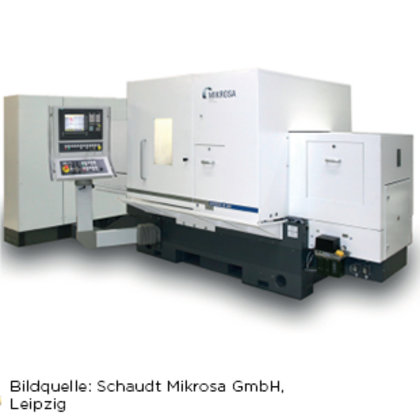Objective
Lubricoolant optimisation for machine tools - complete lubricoolant engineering for a new machine
Description
Planning a new machine? We supply the complete lubricoolant engineering for your new turnover guarantees. The M5 Audit takes into account all possible component applications and product-specific processing cycles that your new machine will be expected to offer. Lubricoolant systems can then be clustered to suit the application. The result is a list of application-specific packages for your new machine tool.
Benefits to you
- Process supply matched to requirements
- Machine consumption optimised
- Environmentally friendly design
Scope of audit
- Design of
- > Nozzles
- Pressures and volume flows
- Feeds and components
- Pump types and volumes
- Frequency regulators
- < Account taken of application spectrum
- Consumption profile
- > Pumps (kWh)
- < Lubricoolant (pressure/volume) per cycle
- TARGET - optimal lubricoolant situation
- Offers for grindaix equipment packages (nozzles, pumps, components)
Procedure for a Coolant Audit M
1 Visit to your production environment
Our technicians visit you with all the necessary measurement equipment. Within a very short space of time (approx. 3h/machine), the periphery inside the machine is recorded.
2 Measurement of flow rates
By means of state-of-the-art measurement technology, we check the current lubricoolant flow rate per line. Depending on the audit, we also monitor all scenarios of your production process.
3 Recording supply pipes and fixtures
All pipes are completely recorded – from the lubricoolant supply connection to all nozzle exits. All geometrical and type values are also logged.
4 Analysis and evaluation of waste
We demonstrate how machining sites may be supplied in a robust way to meet the highest productivity demands, and how all waste in secondary zones may be avoided.

